As an online business owner, you know how important it is to build a relationship with your audience. And how equally important it is to grow your audience.
But unless you capture a website visitor’s email before they leave your blog, chances are they’ll never return. Fortunately, you can retain your visitors by getting them onto your email list.
Through email marketing, you can build a relationship with your audience and convert them into paying customers. But first, you need to know how to use email marketing effectively to increase engagement and boost your bottom line.
So below are eight tried-and-true strategies that work, according to successful bloggers who rely on email marketing to grow their business.
Page Contents
1. Boost email list sign-ups with a valuable freebie
Gone are the days when you could ask for a reader’s email address without offering anything in return. If you want to encourage sign-ups, try offering a valuable freebie, otherwise known as an opt-in or lead magnet.
That’s how business blogger and lawyer Amira Irfan was able to grow her email list from zero to 50,000 subscribers in a couple of years.
“I knew that email marketing is the lifeblood of any business, so I focused on growing my email list from the start by offering freebies,” said Irfan. “When you concentrate on growing your email list and connecting with your subscribers, you not only build trust, but these people become loyal fans who will purchase your products and services.”
Irfan offers a few freebies, including a downloadable guide on the legal mistakes people make in their online businesses.
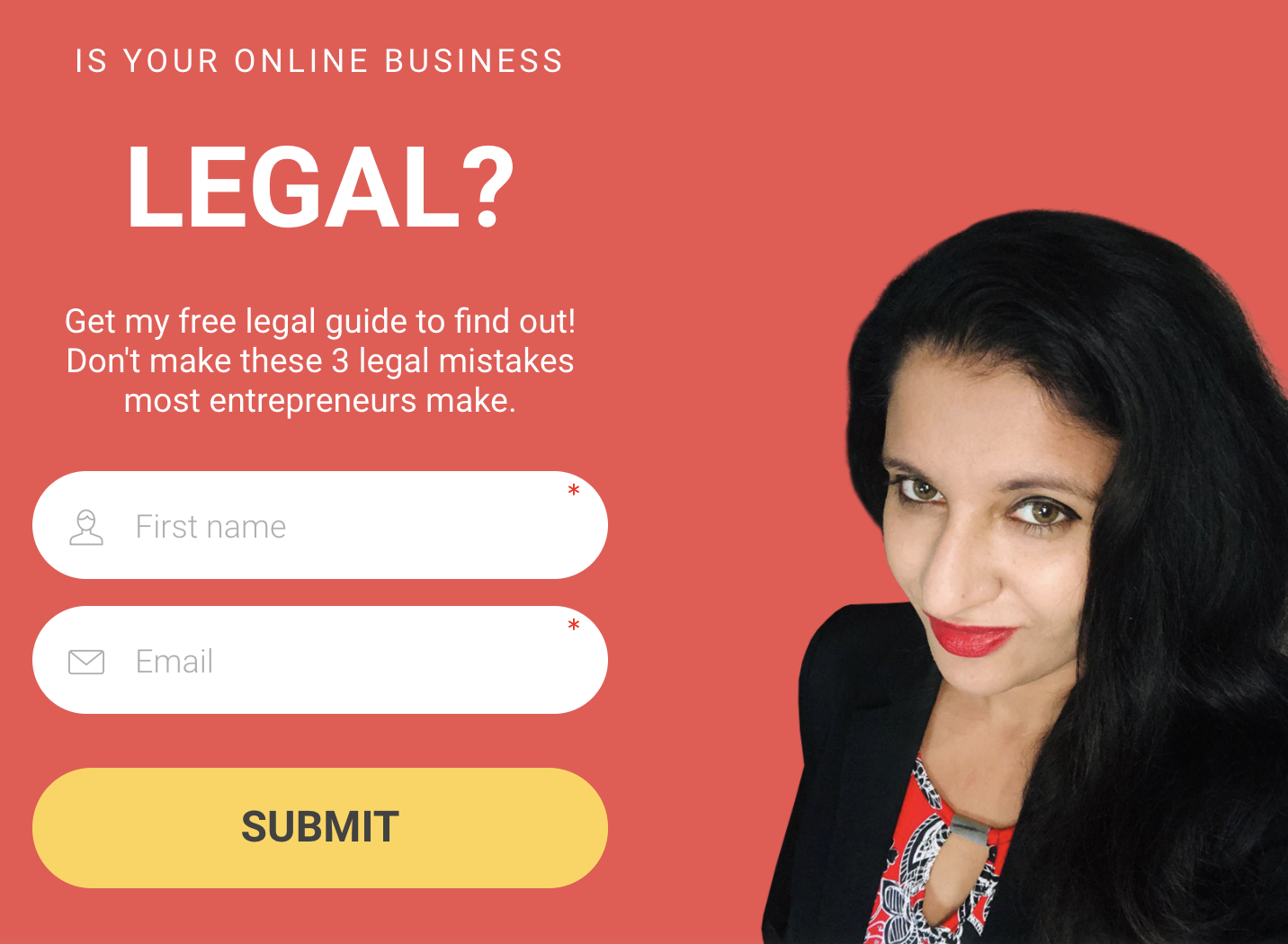
Other ideas for freebies include a checklist, organisational tool, workbook, email course or even a free video lesson.
When designing your freebie, make sure it solves a problem for your ideal customer and connects with any paid products you’ll be selling. After readers download Irfan’s guide on legal mistakes, for example, she pitches her own products and services aimed at helping people legally protect their blogs.
“I use my email list to sell legal templates, services, and even affiliate products that I love and recommend,” said Irfan. Through building her list, she was able to take her online business from 0 to over $78,000 per month.
2. Send personalised emails
Once you have some readers on your list, try your best to send emails that feel personal and customized to their specific needs.
“An easy way to gain more engagement through email marketing is to find ways to send personalized emails,” said Gerald Lombardo, cofounder of word-counting tool and blog, The Word Counter. “Nothing kills the attention of consumers more than cheesy email blasts they know have been sent to a million people.”
One way to accomplish this is by including your customer’s name in the greeting. Many email providers allow you to do this, as long as you requested a name when the person subscribed to your list.
Another way to personalise your emails is to make the most of segmentation. For instance, you might segment subscribers by when they signed up, what form they signed up with or how they interacted with your site.
With an email marketing tool like EmailOctopus, you can also segment your subscribers by location, gender, age and any other data you can collect. You also have the option to segment your subscribers by campaign activity, which is useful for running re-engagement campaigns.
Properly segmenting and targeting your list will allow you to tailor messages to your readers’ needs. And improve your engagement rates in the process.
3. Share a personal story
If you’re a solopreneur or the face of your company, it can help to share your personal story with your subscribers. Sam Rexford, who teaches others how to blog at ChillReptile.com, calls this a “soap opera sequence.”
“Create a ‘soap opera sequence’ for your new subscribers,” Rexford recommends. “A soap opera sequence is an email marketing automation that explores your personal story, including your failures and successes.”
The reason for sharing your personal soap opera? To boost engagement and conversions.
“Soap sequences help your audience relate to you and build trust and authority so when you finally pitch them a product they will be more likely to buy,” said Rexford.
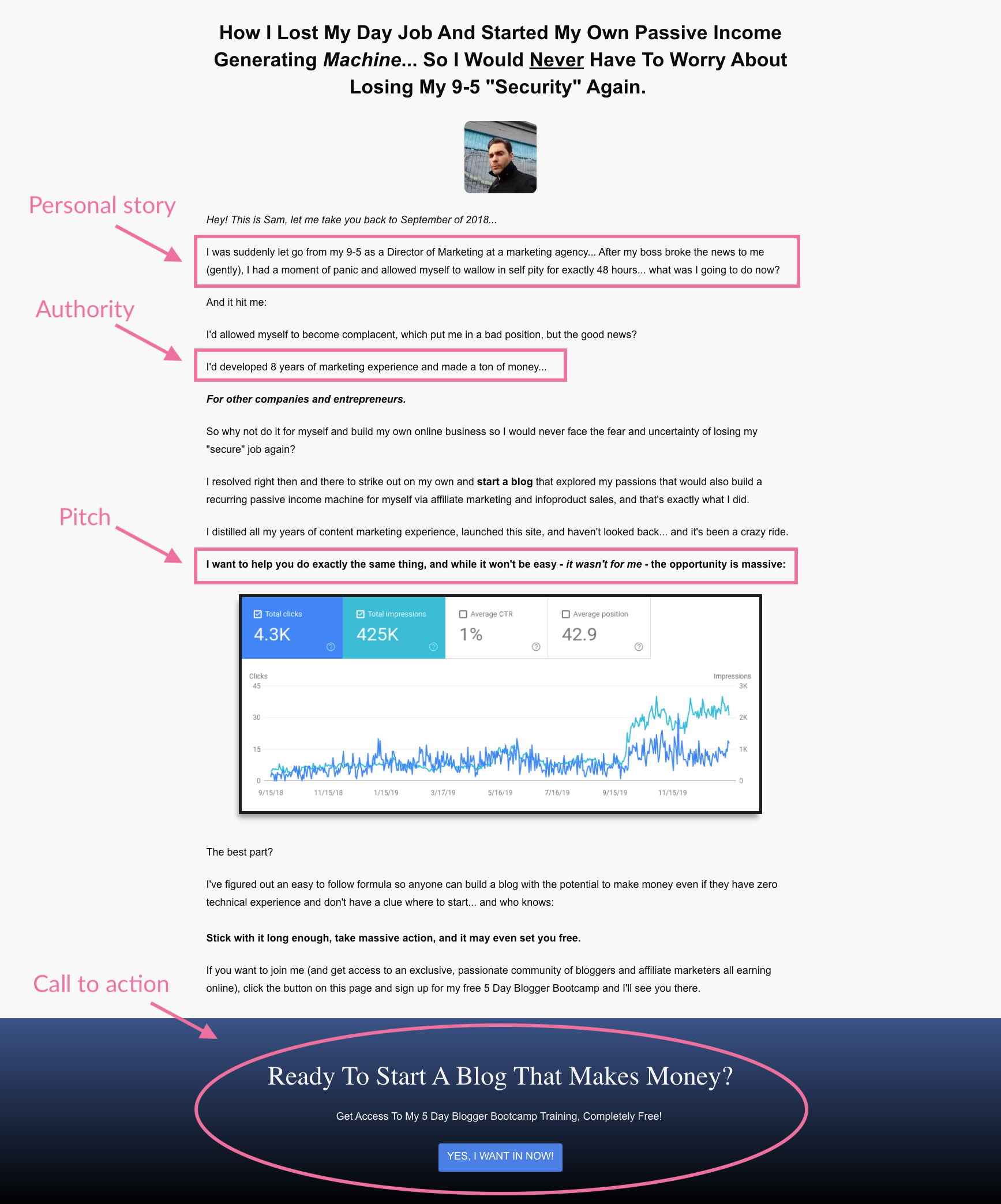
If you’re looking for ways to connect with your audience, consider sharing your personal story to new subscribers on your email list.
4. Include one clear call-to-action
Before sending an email, think about what action you want your readers to take. But don’t encourage them to take multiple actions, or you might just cause confusion.
“One call-to-action (CTA) per email works best,” said Khris Steven, the blogger behind Khris Digital. “Besides the obvious fact of including call-to-actions in every email campaign, it is always best to give subscribers one crystal clear option and action to take in every single email I send. Adding multiple CTAs confuses my subscribers, and they end up not clicking any link at all.”
According to WordStream, emails with a single CTA can boost clicks by 371% and sales by 1,617%. So not only should you keep your messages simple, but make your single CTA straightforward, as well.
5. Avoid sending too many emails
While you want to nurture your audience, you also don’t want to flood their inboxes. According to Chris Moberg, founder of popular sleep blog Slumber Search, it’s crucial not to over-do it with your emails.
“My biggest tip is to not ‘over send’ to your recipients,” said Moberg. “This is a great way to have them unsubscribe, and people will begin to delete your emails before actually reading them.”
Moberg recommends communicating with your list no more than once per week.
“Get into a schedule that sends no more than once a week, and make it worth it every time you click send,” he advised. “Your open rates will increase in a big way and fewer people will unsubscribe from future correspondence.”
Of course, you might send emails more frequently during a product launch, such as for an online course. But unless you’re mid-launch, avoid over-emailing your list if you want to keep the unsubscribes to a minimum.
6. Optimise your emails for mobile
Many readers will interact with your emails on mobile, so make sure your design is responsive.
“Keep into consideration the device and screen size of your end user,” advised Saurabh Jindal, the founder of Talk Travel. “If the majority of your users access your website or platform on mobile, send them an email which fits really well on the small screen.”
Generally speaking, ensure that your emails will look good, no matter what device a reader is using.
“Make sure that your newsletter design is responsive and adjusts to the screen on which the email is opened,” said Jindal. “And make sure the links in the email, when they open, are also responsive.”
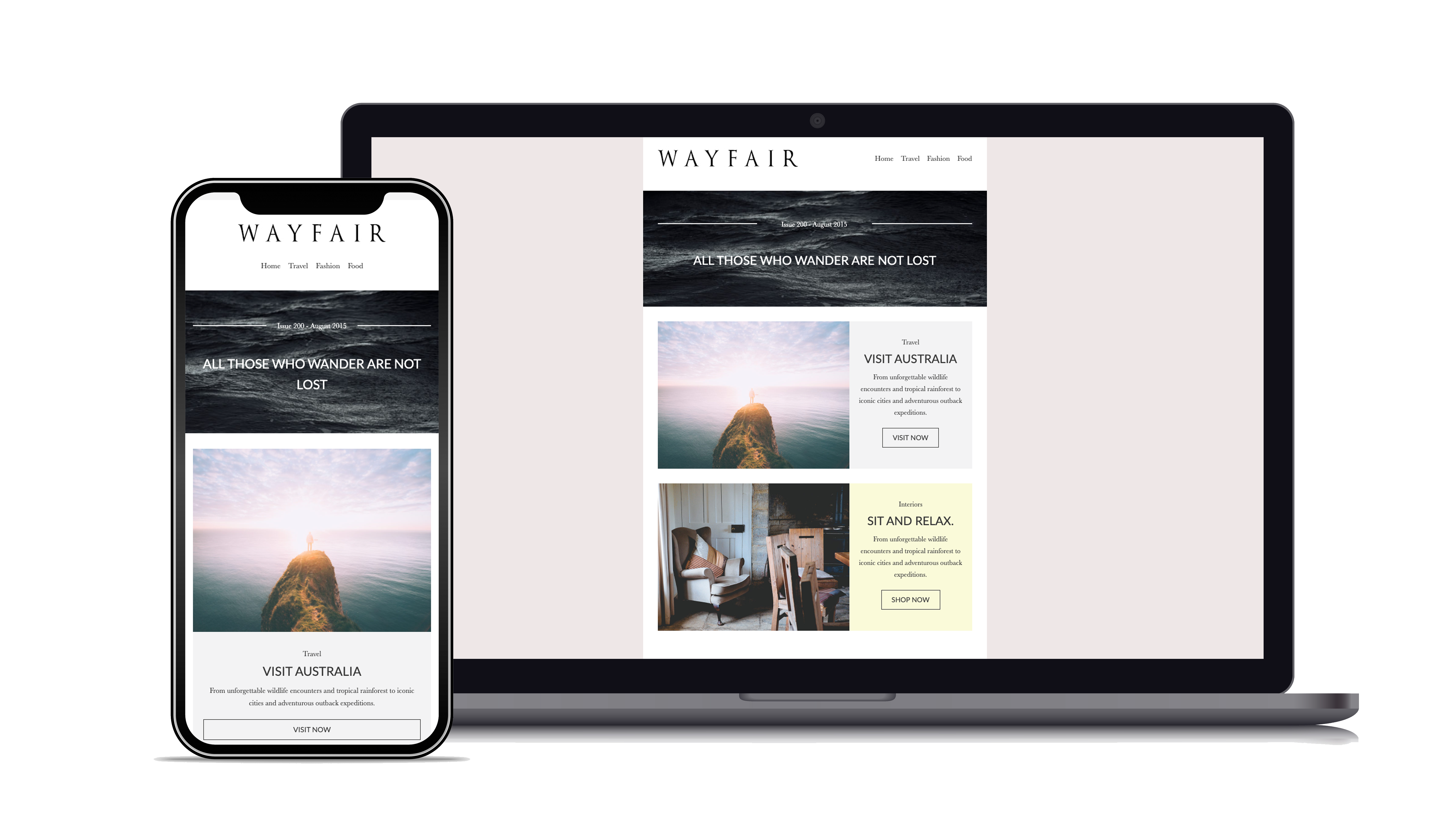
Your email marketing provider should take care of this – like EmailOctopus does. But if you’re using another platform, double check that the templates provided and built in the platform are optimised for both desktop and mobile.
7. Make the most of A/B testing
Once you’ve gotten into the flow of email marketing, take advantage of A/B testing features to boost the effectiveness of your campaign. With A/B testing, you can compare two versions of the same email to determine which had better results. You might tweak the subject lines, message content or both.
According to Jindal, testing out different subject lines to find the catchiest one has been a worthwhile effort.
“Do some A/B testing, and analyze results of two or more subject lines sent to a small sample,” he said.
Subject lines can make or break an email campaign, so do some experimenting until you find one that engages the greatest numbers of readers.
8. Don’t bury the unsubscribe button
Having people leave your email list is inevitable, and you don’t want people to have to hunt for the unsubscribe button.
“Always ensure you have a clear unsubscribe button for email recipients,” suggested Jon Torres, who blogs about SEO and passive income at JonTorres.com. “I see the unsubscribe button as a symbol of mutual respect — that we are interested in offering value, that our subscribers can opt out if they feel we are no longer a great fit.”
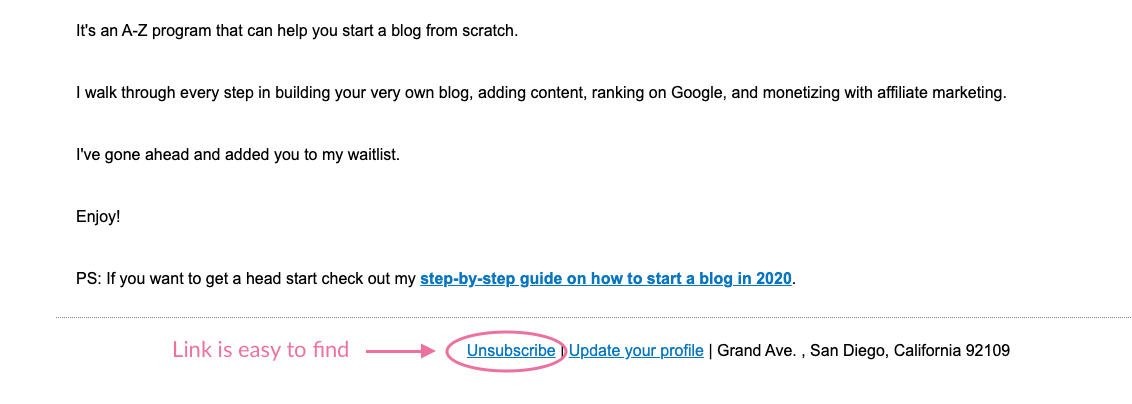
Rather than feeling disappointed when people opt out, remember that unsubscribers are helping you narrow down your list to your ideal customers.
As Torres says, making it easy for people to unsubscribe gives him and his team “a more accurate estimate of our active list size.”
You can also ask unsubscribers for valuable insight on why they’re leaving.
“Be sure to request feedback from those who unsubscribe via a short form,” said Torres. “Then you can tell what to do next to keep email engagement high going forward.”
Wrapping up
By using these strategies, from personalising your emails to A/B testing and everything in between, you can build a list of raving fans who are eager to purchase the products, services or affiliate items you recommend.
Author bio
Rebecca Safier is the blogger and digital marketer behind Remote Bliss, where she teaches people how to earn passive income online through building profitable blogs.
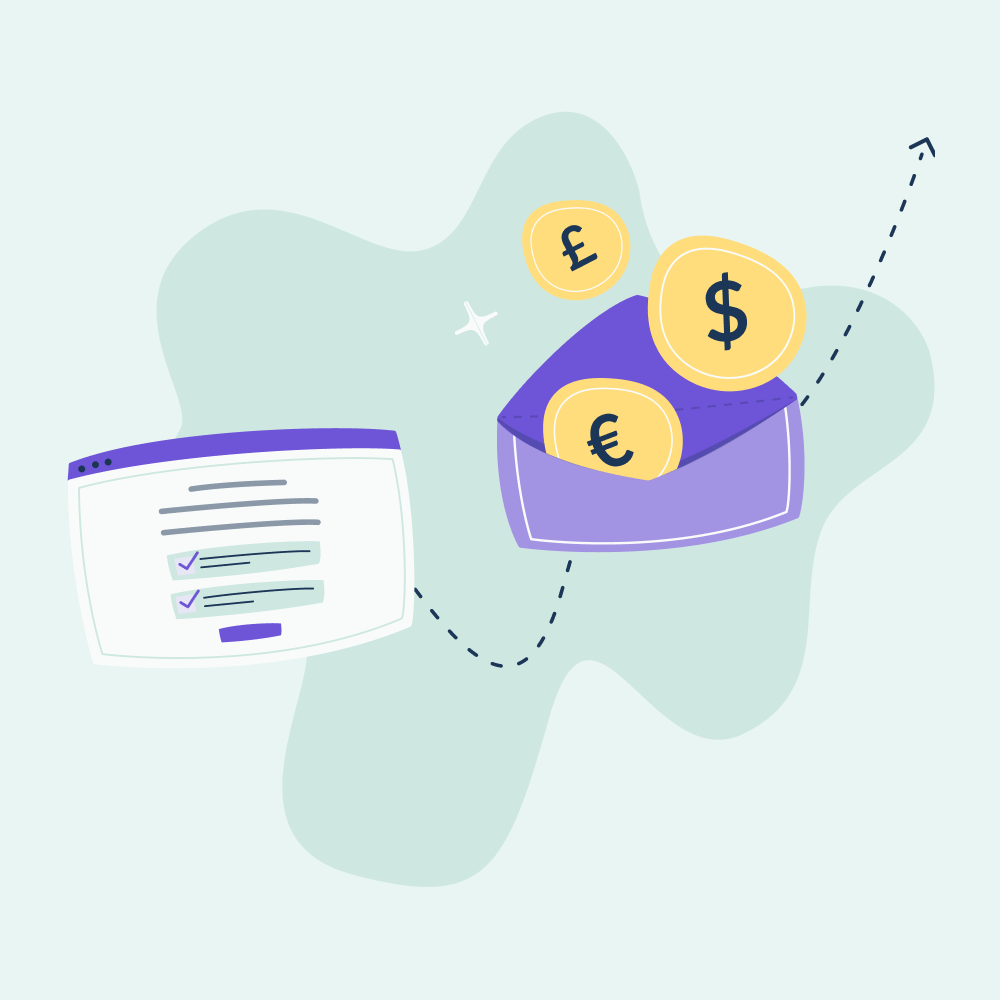
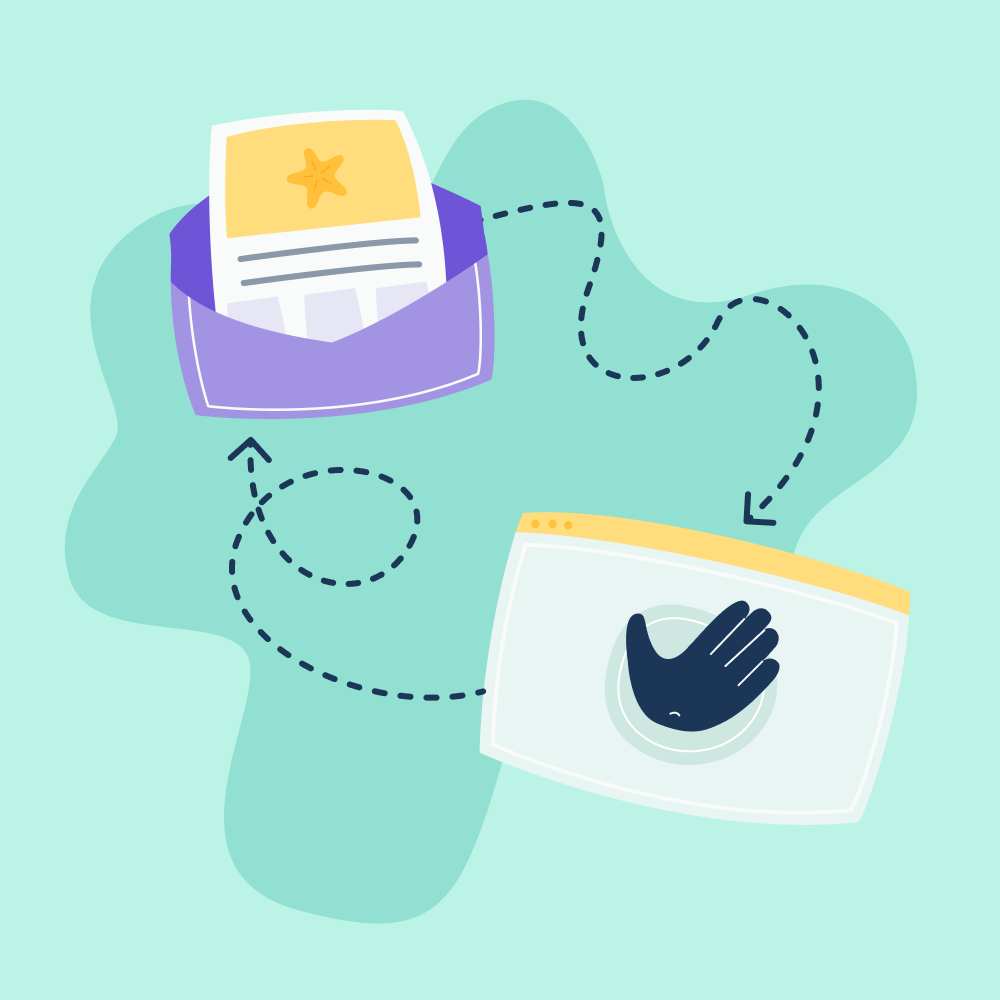
No Comments
Leave a comment Cancel